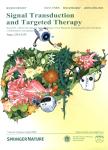版权所有:内蒙古大学图书馆 技术提供:维普资讯• 智图
内蒙古自治区呼和浩特市赛罕区大学西街235号 邮编: 010021

作者机构:Experimental and Clinical Biomedical Sciences“Mario Serio”University of FlorenceFirenzeItaly Department of StatisticsComputer ScienceApplications“G.Parenti”University of FirenzeFirenzeItaly Department of ElectricalElectronicand Information Engineering“Guglielmo Marconi”-DEIUniversity of BolognaCesenaItaly Alma Mater Research Institute for Human-Centered Artificial IntelligenceUniversity of BolognaBolognaItaly
出 版 物:《Signal Transduction and Targeted Therapy》 (信号转导与靶向治疗(英文))
年 卷 期:2025年第10卷第2期
页 面:492-494页
核心收录:
学科分类:1002[医学-临床医学] 100214[医学-肿瘤学] 10[医学]
主 题:screening low dosecomputedtomography explainability reproducibility nodule risk stratificatio noduleriskstratification malignant nodules artificialintelligence
摘 要:In a recent study published in Nature Medicine,Wang,Shao,and colleagues successfully addressed two critical issues of lung cancer(LC)screening with low-dose computed tomography(LDCT)whose widespread implementation,despite its capacity to decrease LC mortality,remains challenging:(1)the difficulty in accurately distinguishing malignant nodules from the far more common benign nodules detected on LDCT,and(2)the insufficient coverage of LC screening in resource-limited areas.1 To perform nodule risk stratification,Wang et *** and validated a multi-step,multidimensional artificial intelligence(AI)-based system(Fig.1)and introduced a data-driven Chinese Lung Nodules Reporting and Data System(C-Lung-RADS).1 A Lung-RADS system was developed in the US to stratify lung nodules into categories of increasing risk of LC and to provide corresponding management recommendations.